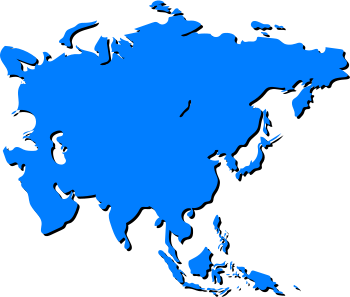Every month, 100,000 readers use the Dinosaur Database, but we receive no support from you. Developing and updating the database requires a lot of work. If you want it to remain open and be updated, please support us via the "Buy us a coffee" button available on every page or via the Support page.
Dinosaur: Tianzhenosaurus chengi

| Length*: | 4 m | 13.1 ft |
| Weight*: | 600 kg | 1,323 lb |
*The largest known specimen
Description
Tianzhenosaurus chengi
Tianzhenosaurus chengi is a newly described species of ankylosaurid dinosaur from the Late Cretaceous period, approximately 83–72 million years ago. This species was discovered in the Huiquanpu Formation at Kangdailiang Mountain, located near the juncture of Tianzhen County in Shanxi Province and Yangyuan County in Hebei Province, China. Named in honor of Chinese paleontologist Cheng Zhengwu for his contributions to vertebrate paleontology, Tianzhenosaurus chengi provides vital insights into the evolution and diversity of Late Cretaceous ankylosaurs.
Physical Characteristics
Tianzhenosaurus chengi is distinguished by a low, flat skull approximately 25 cm (9.8 inches) in length, covered in numerous small, irregular dermal bony tubercles. Its occipital region features a rounded projection that slightly extends above the skull roof, while the dermal bony projections on the posterior sides are short, small, and angled upward at approximately 45 degrees. Compared to its close relative, Tianzhenosaurus youngi, this species exhibits a greater number of smaller and flatter cranial tubercles.
The preserved postcranial skeleton includes robust caudal vertebrae, which were thick and strong, as well as a long, tapering tail club shaped like a peach pit. The pelvic girdle and limb bones indicate a sturdy build suitable for supporting its heavily armored body.
Diet and Feeding Habits
No direct evidence of dietary preferences has been preserved, but as an ankylosaur, Tianzhenosaurus chengi was likely a herbivore, feeding on low-lying vegetation. Its robust skull and jaw structure suggest adaptations for grinding tough plant material.
Habitat and Distribution
The fossils of Tianzhenosaurus chengi were found in the Upper Cretaceous Huiquanpu Formation, which is characterized by red mudstones, sandstones, and conglomerates indicative of a semi-arid environment with seasonal rainfall. The region supported a diverse ecosystem that included other dinosaurs, such as sauropods, theropods, and hadrosaurids. The paleoclimate and vegetation would have provided sufficient resources for large herbivores.
Behavior and Social Structure
While no direct evidence of social behavior exists, the robust tail club suggests Tianzhenosaurus chengi might have used it defensively against predators or rivals. The dense arrangement of dermal armor likely provided substantial protection, reducing its vulnerability to attacks.
Discovery and Research
The holotype of Tianzhenosaurus chengi includes a nearly complete skull (specimen HBV-10004) and postcranial skeleton (HBV-10005). It was excavated during extensive paleontological surveys in the 1980s and 1990s at Kangdailiang Mountain. Subsequent studies revealed distinct cranial and skeletal features that differentiate it from other ankylosaurs, leading to its classification as a new species in 2024.
Significance and Interesting Facts
- Tianzhenosaurus chengi enhances our understanding of ankylosaur diversity during the Late Cretaceous in Asia.
- Its cranial morphology provides new insights into the evolutionary relationships between Asian and North American ankylosaurs.
- The discovery highlights the rich dinosaur fauna of the Huiquanpu Formation, which includes ankylosaurs, hadrosaurids, and theropods.
Locations
Sources
Material: Nearly complete skull (specimen HBV-10004) and postcranial skeleton (HBV-10005)
References: Pang, Q., Li, Z., & Guo, Z. (2024). A new ankylosaurid species from Shanxi, China. Journal of Vertebrate Paleontology.



